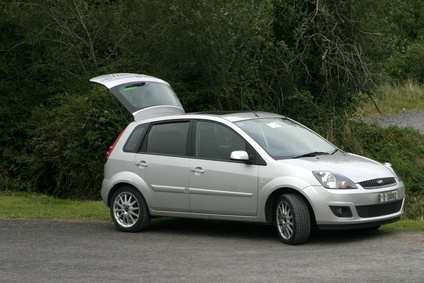
The Ford ABS system prevents your brakes from locking up under hard braking. This prevents slipping on the snow or wet roads. If you suspect your ABS system is not working, you need to troubleshoot for brake problems to ensure your vehicle can brake safely in rough conditions.
Inspect the master cylinder for fluid level. There is a mark on the cylinder's side that indicates the proper fluid level. The cylinder is made of plastic and you can see the fluid inside. If the fluid is low, remove the cap and add DOT5 brake fluid until it reaches the proper level on the master cylinder's side.
Inspect the brake lines and the master cylinder's side for any seeping brake fluid. Seeping would indicate a fluid leak and could cause your ABS system to fail under heavy braking. If you notice any leaking, take your Ford to a qualified mechanic to repair the brakes.
Loosen the lug nuts on the driver's side front wheel with a tire iron, place a jack under the frame, jack up the vehicle and place it on a jack stand. Remove the lug nuts and pull the tire off the vehicle. Duplicate these steps on the driver's side rear tire.
Inspect the brake pads. On each brake pad you will locate a "wear strip." If the strip is touching the brake rotor, worn-out brake pads have compromised the ABS. A qualified mechanic can replace the brake pads.
Place the wheels back onto the Ford, tighten the lug nuts, lift the vehicle off the jack stand and lower it to the ground. Double-check the lug nuts for tightness. Duplicate this on both wheels.
Drive your Ford at 20 mph in an empty parking lot when the pavement is wet and press on the brakes as you would during an emergency stop. You should feel the brake pedal pulsate and you should hear clicking sounds. If this happens your ABS brakes are functioning properly. If not, take your Ford to a qualified mechanic.